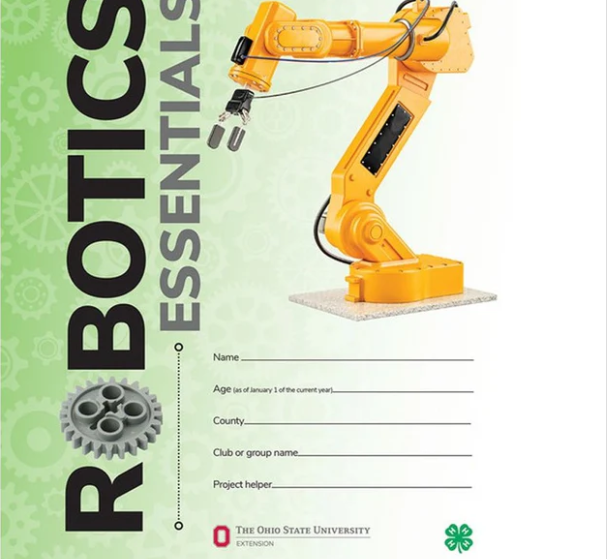Home » 4-H Opportunities » Projects » STEM (Science, Technology, Engineering, & Math) » Robotics
Robotics

What is it all about?
Exploring 4-H Robotics is an ideal way to introduce science, math, engineering and technology while teaching life skills. Through hands-on activities, the 4-H Robotics projects teach basic concepts related to robotic subsystems such as structure, power, sensors, control and programming. These concepts are the foundation for building robots and robotic subsystems from a variety of materials and packaged kits. 4-H Robotics has projects and resources for a wide variety of interests.
Grow in Your Project
Beginner
- Explore the world of robotics and how robotic systems are used in everyday life
- Learn to identify the important parts of a robot and use problem solving to design and program a robot to do basic tasks
Intermediate
- Fine tune your robot’s design to perform specific tasks, including creating versatile attachments to grasp, grab, and move objects
- Learn to use robotic sensors to detect sound, objects, and to track and follow lines
Advanced
- Learn to use advanced programming strategies to perform more complicated tasks
- Explore different types of robotics systems including making your own robot
Member Resources
Take Your Project Further!
- Take a field trip to a facility that uses robotics (manufacturing, processing, etc.)
- Explore robotics careers using online resources
- Learn about what robotics design engineers do
- Attend a robotics camp
- Complete in a robotics challenge at a County event
- Do a presentation on how robotics is used in medicine (da Vinci robotic surgery)
- Teach younger members how to program Lego Robots
- Do a presentation about robotics career at a career fair
- Explore how robots can be used in the future by talking with an engineering professor
- Interview a local engineer on how they use robotics in their work
Applying Project Skills to Life
Enhance Your Communication Skills
- Do a presentation on how robotics is used to make things for our everyday life
- Demonstrate your robot in action and describe how you designed it and programmed it
- Demonstrate the use of sensors on your robot and how they can relate to sensors used in robotic controls in manufacturing processes
Get Involved in Citizenship and Service
- Organize a robotics demonstration for your community
- Organize a workshop to teach others about robotics
- Create a display showing what you can do in the 4-H robotics project and place it in a public location like a library, museum or at a school
Learn about Leadership
- Teach younger members about robotics
- Attend a Cloverbud project meeting and let the members work with a robot you have designed
- Organize an open house in your community to promote the robotics project
Showing What You’ve Learned
- Make a poster of robot parts and describe how they work
- Make a poster or an exhibit of the robot you designed and include information on what the robot does and how it is programmed
- Demonstrate how your robot performs and include information on how you programmed it
- Make a display that describes a field trip you took to learn about robotics
- Create a robot challenge for younger members and help them to program robots to compete in the challenge
- Record a video of the process for programming a simple robot and demonstrate how you can make it do simple tasks
- Create a presentation on how robots work with today’s technology and how they can be used in the future to help with various tasks
Adapted with permission from Wyoming State 4-H, Project Information Sheet, Robotics. Retrieved from: https://www.uwyo.edu/4-h/projects/science-technology/robotics.html.
This page is optimized for printing





